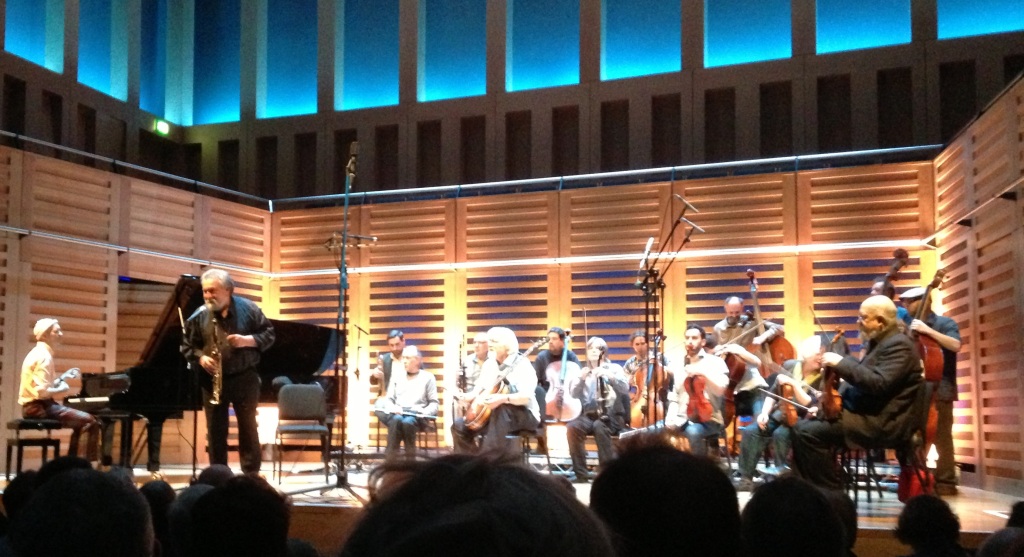French cool (encore)
 Unusually, I can remember the exact date I bought this record, and the precise location: July 14, 1963, at the Drug Store on the Champs-Elysées. My friend Dave and I had hitched to Paris during the school holidays, with the intention of heading for the Côte d’Azur and an imagined heaven on earth perfumed with Gauloises and Ambre Solaire and populated exclusively by Françoise Hardy lookalikes.
Unusually, I can remember the exact date I bought this record, and the precise location: July 14, 1963, at the Drug Store on the Champs-Elysées. My friend Dave and I had hitched to Paris during the school holidays, with the intention of heading for the Côte d’Azur and an imagined heaven on earth perfumed with Gauloises and Ambre Solaire and populated exclusively by Françoise Hardy lookalikes.
Our lift dropped us off at the Arc de Triomphe on a warm summer evening. The place seemed lively. Very lively, in fact. Cars were driving up and down sounding their horns non-stop. Wow, we thought. So this is Paris.
We went into the smart new Drug Store, where the record department turned out to have cool stuff you couldn’t get at home, much of it on the sacred Blue Note label. Dave, who was better funded, bought an album: Donald Byrd’s A New Perspective, featuring the wonderful “Cristo Redentor”, with the trumpeter leaning on an E-type Jag in Reid Miles’s classic cover design. I contented myself with an EP: two tracks from Don Wilkerson’s Preach, Brother!, pressed as a seven-inch 45 and repackaged in a nice sleeve to promote the use of one of them, “Camp Meetin'”, as the signature tune for an excellent nightly radio show called Pour ceux qui aiment le jazz, presented by Frank Ténot and Daniel Filipacchi on Europe 1.
Wilkerson, born in Louisiana in 1932 but raised in Texas, joined the band Ray Charles put together in Houston in 1954. He preceded David “Fathead” Newman as the band’s featured tenor saxophonist, and those are his solos you can hear on “I Got a Woman” and “Hallelujah, I Love Her So”. He recorded one album of his own, The Texas Twister, for Riverside in 1960, and three for Blue Note between 1962 and ’63, of which Preach, Brother! (with Grant Green on guitar, Sonny Clark on piano, Butch Warren on bass and Billy Higgins on drums) is the pick. In 1961 he was back with a bigger Ray Charles orchestra on a hugely successful European tour, sharing tenor battles with Newman, and he played the majestic solo on a shattering version — arranged by Quincy Jones — of “Come Rain or Come Shine”, captured in Paris, at the Palais des Sports, just two years before our arrival (and here’s a terrific blog post on that tour).
In his autobiography, Brother Ray, published in 1978, Charles called Wilkerson “one of the best saxophonists of the century. I loved to watch Donald attack Fathead on the stand… it brought out the best in both cats.” He employed him again, albeit briefly on each occasion, in 1962, 1964 and 1978. Michael Lydon’s excellent 1997 biography, Ray Charles: Man and Music, records the fact that disputes over drugs led to Wilkerson’s several departures from the band. After his last release on Blue Note he went back to Houston, where he died in 1986. I love his soulful sound.
And so, on that evening in 1963, we wandered on down the Champs-Elysées. Our only plan was to find a bridge to sleep under, because it seemed like the proper thing to do. But as the hooting and tooting and general gaiety increased, it was starting to dawn on us that something was going on. By the time we reached the Place de la Concorde, where an open-air concert was taking place, the penny had dropped. It was Bastille Day.









